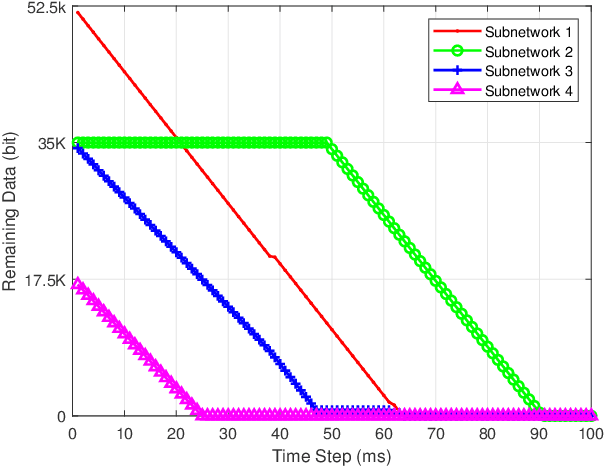Chenhui Ye
Addressing the Curse of Scenario and Task Generalization in AI-6G: A Multi-Modal Paradigm
Apr 07, 2025Abstract:Existing works on machine learning (ML)-empowered wireless communication primarily focus on monolithic scenarios and single tasks. However, with the blooming growth of communication task classes coupled with various task requirements in future 6G systems, this working pattern is obviously unsustainable. Therefore, identifying a groundbreaking paradigm that enables a universal model to solve multiple tasks in the physical layer within diverse scenarios is crucial for future system evolution. This paper aims to fundamentally address the curse of ML model generalization across diverse scenarios and tasks by unleashing multi-modal feature integration capabilities in future systems. Given the universality of electromagnetic propagation theory, the communication process is determined by the scattering environment, which can be more comprehensively characterized by cross-modal perception, thus providing sufficient information for all communication tasks across varied environments. This fact motivates us to propose a transformative two-stage multi-modal pre-training and downstream task adaptation paradigm...
Multi-agent Reinforcement Learning for Dynamic Resource Management in 6G in-X Subnetworks
May 10, 2022



Abstract:The 6G network enables a subnetwork-wide evolution, resulting in a "network of subnetworks". However, due to the dynamic mobility of wireless subnetworks, the data transmission of intra-subnetwork and inter-subnetwork will inevitably interfere with each other, which poses a great challenge to radio resource management. Moreover, most of the existing approaches require the instantaneous channel gain between subnetworks, which are usually difficult to be collected. To tackle these issues, in this paper we propose a novel effective intelligent radio resource management method using multi-agent deep reinforcement learning (MARL), which only needs the sum of received power, named received signal strength indicator (RSSI), on each channel instead of channel gains. However, to directly separate individual interference from RSSI is an almost impossible thing. To this end, we further propose a novel MARL architecture, named GA-Net, which integrates a hard attention layer to model the importance distribution of inter-subnetwork relationships based on RSSI and exclude the impact of unrelated subnetworks, and employs a graph attention network with a multi-head attention layer to exact the features and calculate their weights that will impact individual throughput. Experimental results prove that our proposed framework significantly outperforms both traditional and MARL-based methods in various aspects.
 Add to Chrome
Add to Chrome Add to Firefox
Add to Firefox Add to Edge
Add to Edge